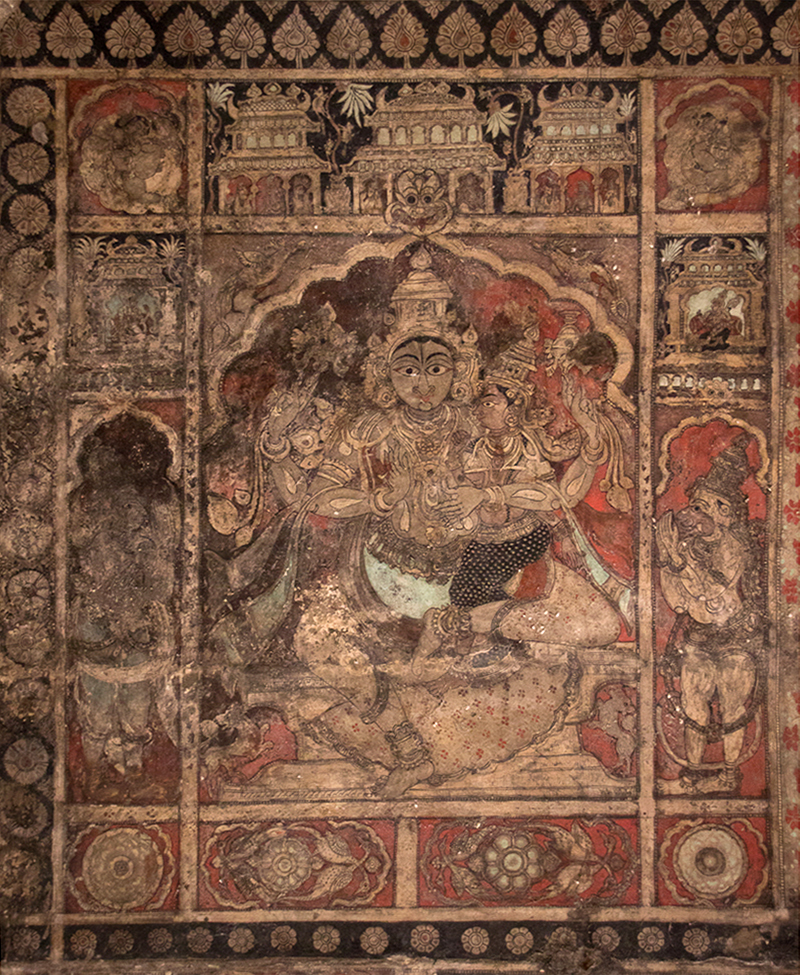ARTICLE
Ceiling Murals at Virupaksha Temple, Hampi
The murals are rendered with an eye for simplicity and movement, and generally use warm tones such as red and ochre as well as shades of white and grey, with clear black outlines.
The Virupaksha temple predates the city of Vijayanagara, with evidence of activity at the site from as early as the eighth century. A fourteenth-century shrine established there was significantly expanded over the fifteenth and sixteenth centuries by a number of Vijayanagara rulers. Most of the murals were probably made around this time. However, some depictions of costume, headdresses, and weapons appear similar to those in the ceiling paintings of the Narasimha Temple at Sibi, built during the reign of Tipu Sultan towards the end of the eighteenth century. It is a matter of some debate whether these were later additions or a refurbishment of existing paintings.
Bibliography
Our website is currently undergoing maintenance and re-design, due to which we have had to take down some of our bibliographies. While these will be re-published shortly, you can request references for specific articles by writing to hellomapacademy@map-india.org.










